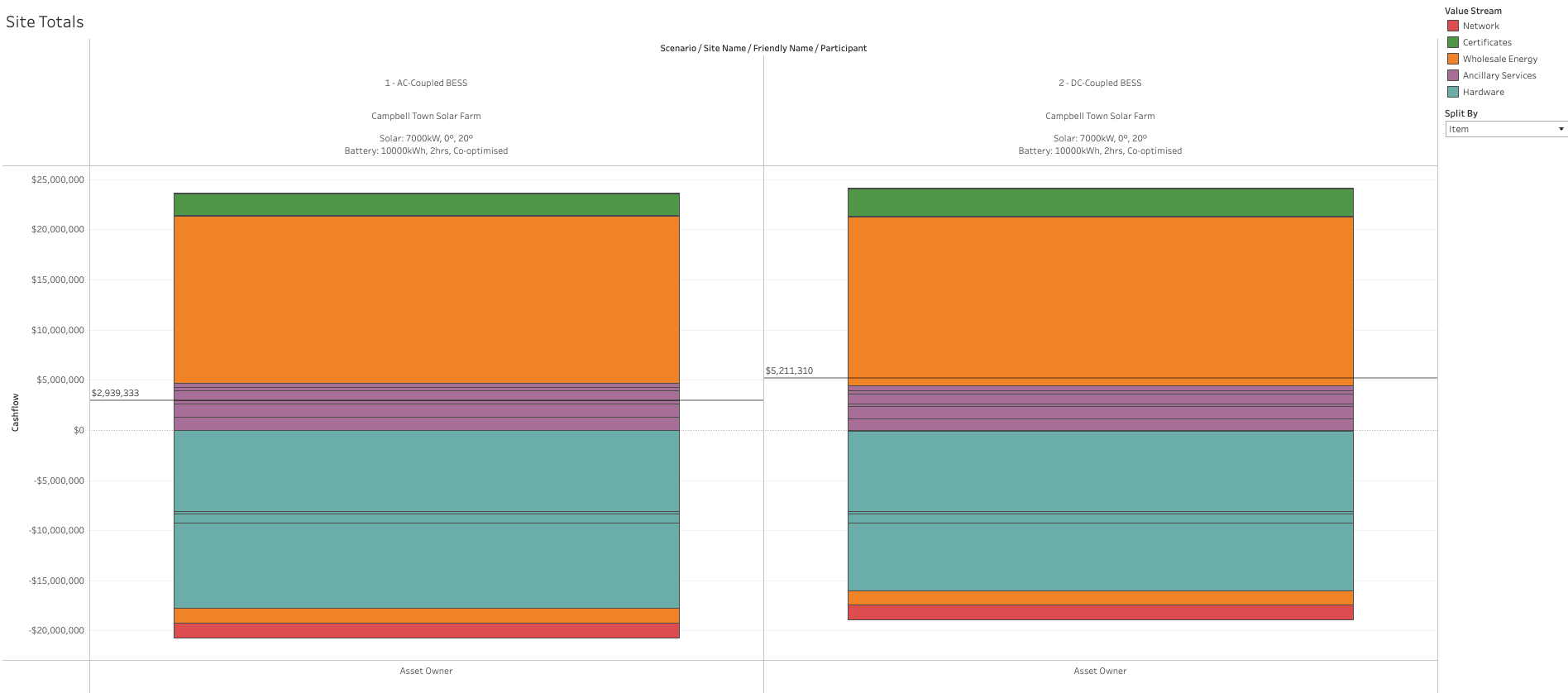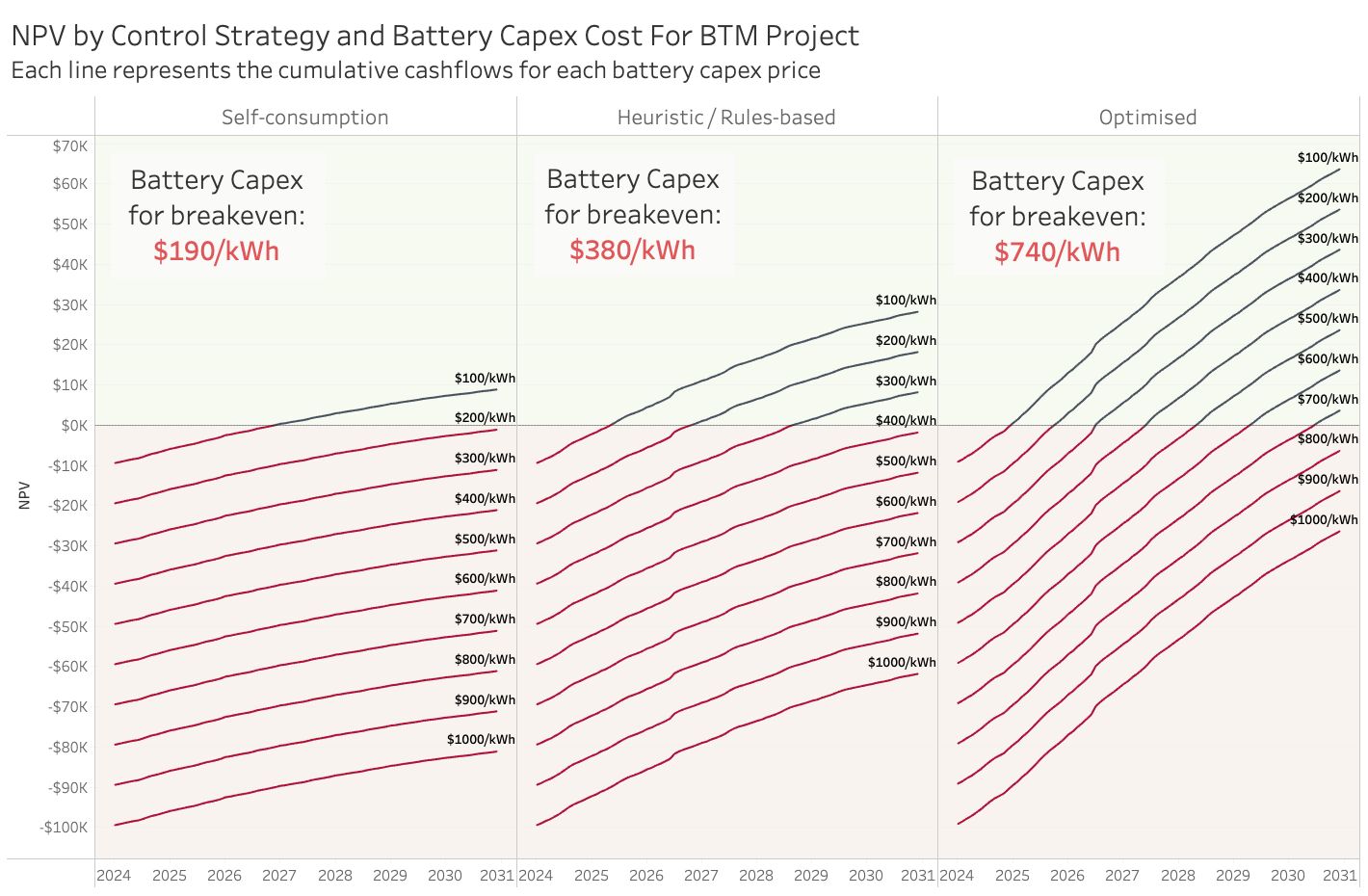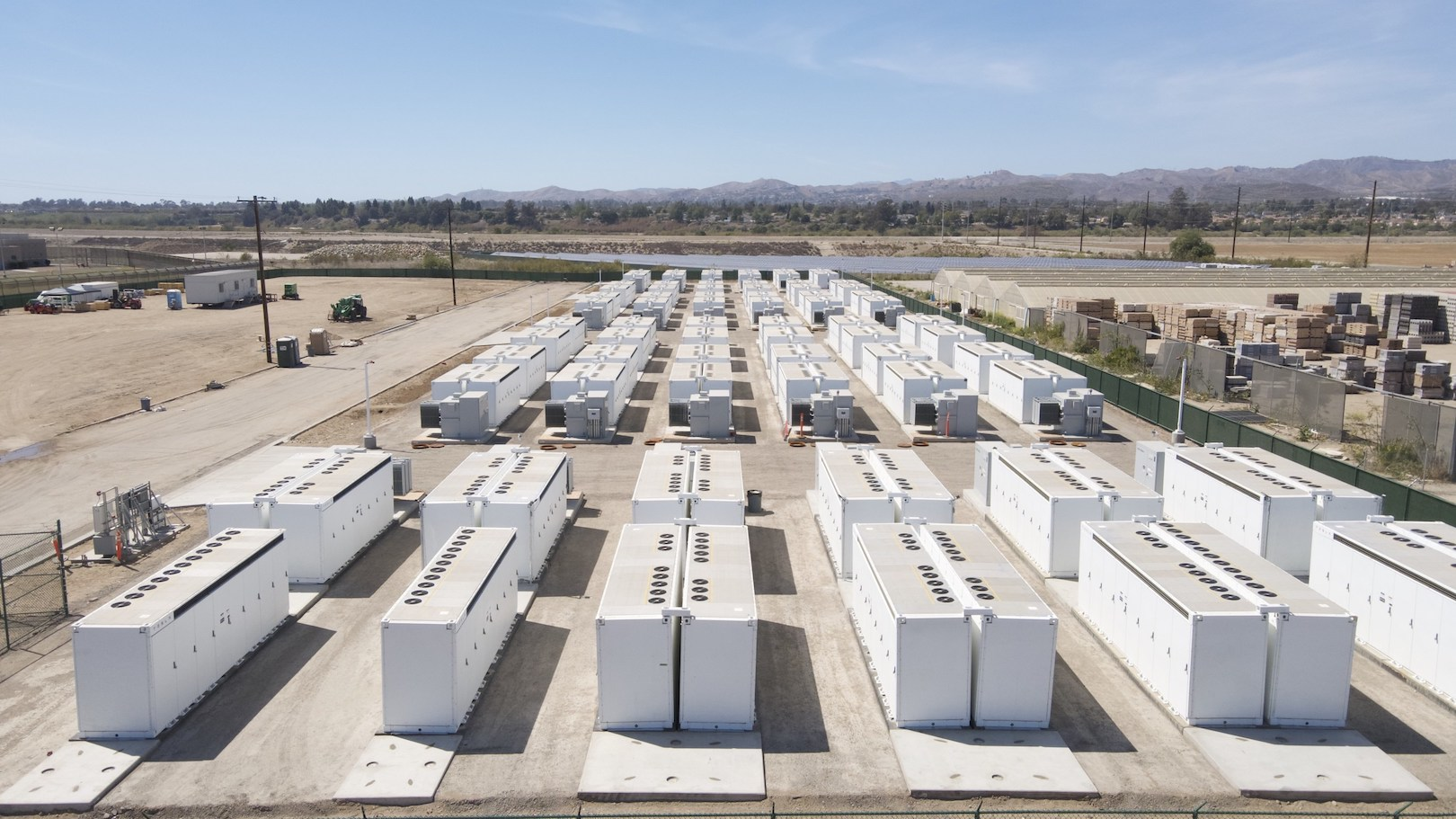Pete Tickler uses Gridcog to test the impact of different battery control strategies by running near-identical versions of the site where the only thing that varies is the way the BESS is controlled.


Our mission is to accelerate investment in the clean energy transition. Our customers use Gridcog to build confidence in the projects they are developing.
We are seeing increasing interest in hybrid solar and battery storage systems, for both behind-the-meter and front-of-meter applications.
Grid connections are a valuable resource and these hybrid systems can deliver more value from the same connection capacity than their stand-alone counterparts.
Recently we’ve been working with a couple of customers to tune-up our modelling of DC-coupled systems, that is, where the solar and battery system share an inverter. And I thought it would be useful to dig into how these systems work, and some of the advantages you could see.
I’ve illustrated an AC-coupled Solution below, where the solar and battery systems each have their own inverter.
As you can see in the illustration, when we charge an AC-coupled battery from the co-located solar system, we convert the DC-power from the PV system to AC-power, and then we convert that AC-power back to DC-power to charge the battery.

With a Hybrid-inverter, illustrated below, we can charge the battery more efficiently by avoiding the AC-power conversion steps. There are other losses we can avoid, like reducing “DC clipping”.

In a solar power system, "DC clipping" refers to the condition where the production of the solar panels exceeds the inverter's power rating, causing a "clipping" or reduction in the system's output power.
This is due to the fact that inverters can only convert as much DC power from the solar panels into AC power as their maximum rated capacity.
With a hybrid-inverter we can charge the battery with some or all of these DC-clipping losses (subject to the charge limits of the battery).
Modelling PV and Battery systems that share an inverter can be complex because there are multiple shared elements that can impact on the dynamics of the overall solution, like DC-bus capacity limits, DC:AC conversion ratios, the AC-power limits, and of course the grid connection limits (which in Gridcog can be static or dynamic).
To illustrate the potential advantages of a DC-coupled system over an AC-coupled system, I created a simple project in Gridcog.
Because Gridcog supports multi-scenario analysis we can easily compare the benefits of having a shared inverter in the same project model (similarly we can compare different development sites, different asset sizes, different storage technologies, different pricing assumptions, different off-take arrangements, and so on).
In this example, we have a 7MW Single-Access Tracking Solar PV System and a 5MW 2-Hour Lithium-Ion BESS deployed behind a 5MW grid connection and subject to sub-transition network use of service costs.
There are a number of important assumptions that will impact overall performance and for a comparison of AC and DC-coupled solutions one of the most important is the Inverter Loading Ratio (ILR), which is the DC rating of the PV array to the AC rating of the inverter, because of how this impacts solar DC-clipping. For this project we’ve set the ILR to be 1.4.
Once we configured both solutions, each in their own scenario, we ran a 20-year simulation where the PV and Battery systems were co-optimised and offered into both wholesale energy and frequency control services markets (based on a forward price curve for energy from Endgame Economics).


In this project model we are seeing superior economics from the DC-coupled option, to the tune of just over $2M over the 20-year project life (undiscounted). This is a result of lower capex cost assumptions due to the shared inverter, and higher wholesale energy revenues due to increased site exports.
As we would expect, the enhanced efficiencies inherent in DC-Coupled Systems have led to greater energy exports to the grid, in this model to the tune of around 2,300 MWh of additional export in the first year. This has been driven by improved power conversion efficiencies and avoided DC-clipping losses.
However, it's important to note that the increase in project revenue has not directly correlated with the increase in energy exports. This is primarily due to a phenomenon known as revenue cannibalization. In essence, during peak solar production hours, excess supply causes energy prices to drop. As DC-Coupled Systems tend to increase exports during these times of heightened solar production, the revenue will generally not increase proportionately due to these additional exports being at times of lower (or even negative) market prices. When prices are zero or negative a battery optimiser may prefer charging from the grid rather than charging from DC excess energy.
To get a better sense of how the DC-coupled system is behaving differently, it can be useful to look at some specific days. The standard Gridcog Results Dashboards don't show the DC-clipping and conversion losses but they are available in the Energy Flows Export, which is provided to support model validation. Below we have shown the raw interval data for the DC-coupled solution, showing the DC losses (red) and the DC-clipping that was used to charge the BESS in a selected week in the model. You will notice that the BESS is charging from DC-clipping losses when energy prices are not zero or negative.

While this example has focused on a front-of-meter application, Gridcog can also model behind-the-meter and microgrid applications. If you'd like to evaluate your hybrid system options (or any other site selection, technology selection, or commercial model selections) then connect with us to arrange a Gridcog demo to quickly build confidence in your clean energy project.

Pete Tickler uses Gridcog to test the impact of different battery control strategies by running near-identical versions of the site where the only thing that varies is the way the BESS is controlled.


Frequency control is a lucrative source of revenue for battery owners but participation in Regulation services also requires material energy throughput, increasing the degradation of the asset and adding complexity to wholesale trading


Comparing the commercial performance of a two hour and eight hour duration grid-scale battery in Australia's NEM
